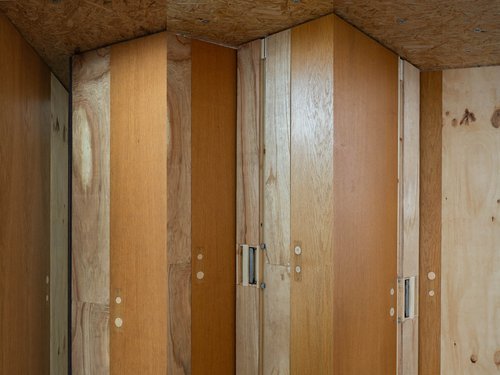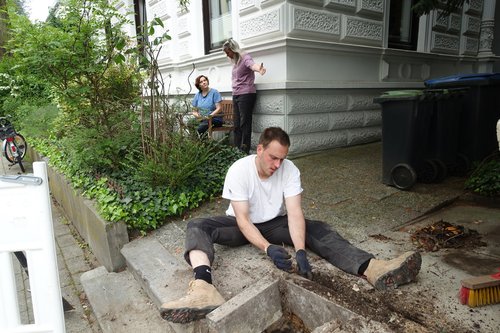has a Master of Science degree in Architecture and has been a research assistant at the Chair of Housing and Design Basics at RWTH Aachen University since 2022. For his dissertation, he is researching the role of interior doors in housing using the framework of a polycontextural logic. He studied architecture in Siegen, Brussels, and Weimar, where he graduated in 2019.
Current research projects: Many-valued Doors
Practice: www.saatschaller.com

The dominant model for explaining the world relies on a binary system: observations are categorized as either A or B, black or white, being or non-being. In short, this model adheres to a strict dualism rooted in the two-valued logic introduced by Aristotle. But how can we account for contradictory, opposing, or non-binary phenomena – particularly in architecture? Early efforts to translate this question into architectural discourse can be found in the work of Doris and Ralph Thut, who in turn draw on Gotthard Günther’s concept of a many-valued — or polycontextural — logic. This study applies these ideas to a fundamental architectural element: the door.

The initial implementation of a design process is usually based on previous analyses that are either made by the designers themselves or drawn from outside sources. In this experiment, we questioned this process and investigated a different approach to specific places, actors and environments in the form of an activist act based on designing objects, repairing existing structures or even demolishing them from a position in the middle of things, not objectively, not impartially, and above all not at a distance.
The authors of this article were also interviewed by Eva-Maria Ciesla and Hannah Strothmann for the thematic issue „Architecture as Intervention” about the design studio and the possibilities for transferring the learnings into architectural practice. See also: Vollbracht, N. & Saat, R. (2024). Interview: Hybrid Internship. Dimensions. Journal of Architectural Knowledge, 4(7), 171-178. https://doi.org/10.14361/dak-2024-0714

How should architects enter the spaces they work in and intend to transform? It seems obvious that they would align their actions with paradigms of appropriateness and attentive observation. But do they really? Given our responsibility toward the looming ecological catastrophe and escalating social issues, shouldn't architects instead approach the field with friendly and good-humored impositions? Isn’t this precisely how they can help initiate the sometimes disruptive processes of change? This might seem presumptuous in an age that continues to criticize past episodes of architectural history – especially modernism – for such behavior. Yet, this is exactly why the following method blends well-measured activism, scientific methods, and an optimistic approach to ‘designing out into the world.’ It aims to test our willingness to make concrete changes.
This article was first published under the German title „‚Vom Primat der Anwesenheit‘ zu: ‚Erst Ent- werfen, dann Fragen‘” in issue no. 11 on the subject of ”Angemessenheit’. For the German version see: Feriduni, J. Fischer, F. Nowak, H., Preuß, T. Saat, R. Schlöder, N. Urban, C. & Vollbracht, N. (2024). Vom „Primat der Anwesenheit“ zu: „Erst entwerfen, dann fragen“. Archimaera. architektur. kultur. kontext. online 11, 87-99. https://doi.org/10.60857/archimaera.11.87-99. This version was translated into English and graphically revised for wohnbau.site.